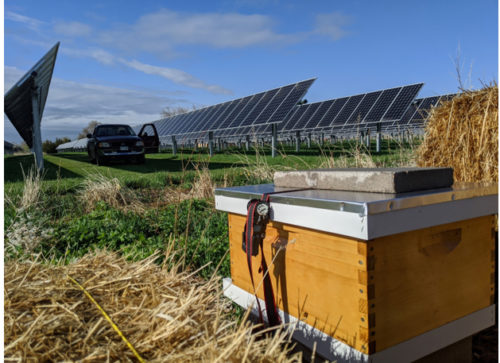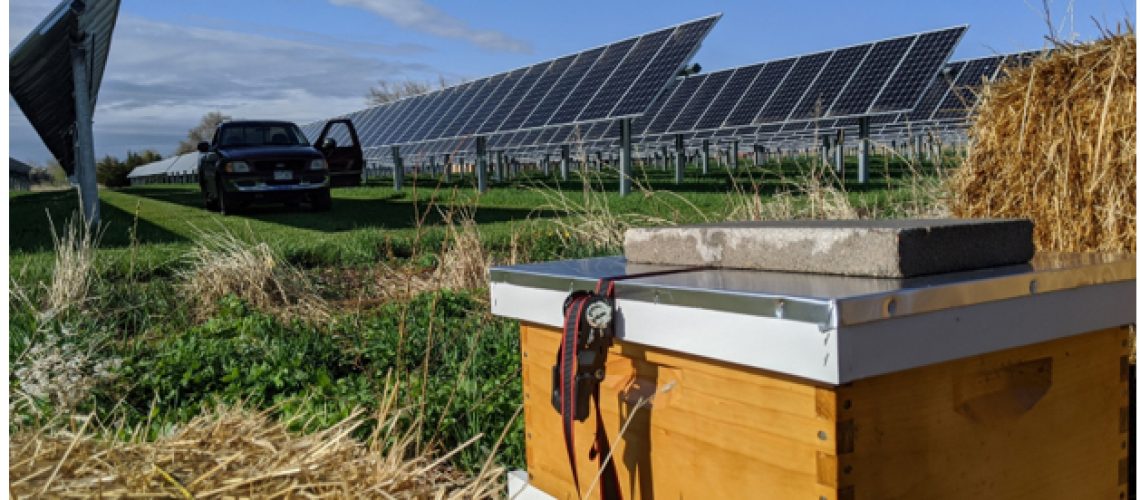
A beehive operated by Best Bees and sponsored by Google located at Jack’s Solar Garden. Best Bees installs and maintains honeybee hives on commercial and residential properties across the U.S. and seeks to improve bee health and expand bee populations. Photo courtesy of Byron Kominek
SEIA is releasing a new report to aid policymakers in siting community solar projects.
Well-designed community solar projects can result in increased crop and clean energy production, the report shows. Community solar projects can also result in other benefits, such as protecting soils and providing habitat for many important species.
“Policymakers should strongly encourage these project designs,” said David Gahl, SEIA’s senior director of state policy for the East. “By following these steps, community solar developers, landowners and communities can work together to ensure the benefits of clean, locally produced solar energy are shared by all stakeholders.”
This new report starts with the concept that community solar systems should be designed so they result in ecosystem and agricultural benefits.
Then, SEIA recommends policymakers deploy the existing well-established tools to avoid, minimize and/or mitigate any environmental impacts associated with community solar construction. For decades, builders seeking federal, and in some cases state approvals, have been required to assess the environmental impact of their proposed projects, and develop alternatives that address environmental concerns.
“Community solar represents an important feature of America’s clean energy future, providing homeowners, renters, and businesses greater access to the benefits of solar energy generation,” said Ethan Winter, Northeast Solar Specialist for the American Farmland Trust. “American Farmland Trust appreciates SEIA’s efforts to articulate a Community Solar Siting Framework. With potentially thousands of community solar facilities to be developed across the country, effective guidelines are needed for developers, landowners and local permitting jurisdictions to advance projects that are designed to avoid, minimize and mitigate impacts on our most productive farmland.”
To avoid the worst impacts of climate change and meet aggressive renewable energy goals, states need to build significantly more community solar projects. The framework described in this report should be used by policymakers as they tackle the challenges of siting more solar projects that will help them reach their clean energy goals.
News item from SEIA



